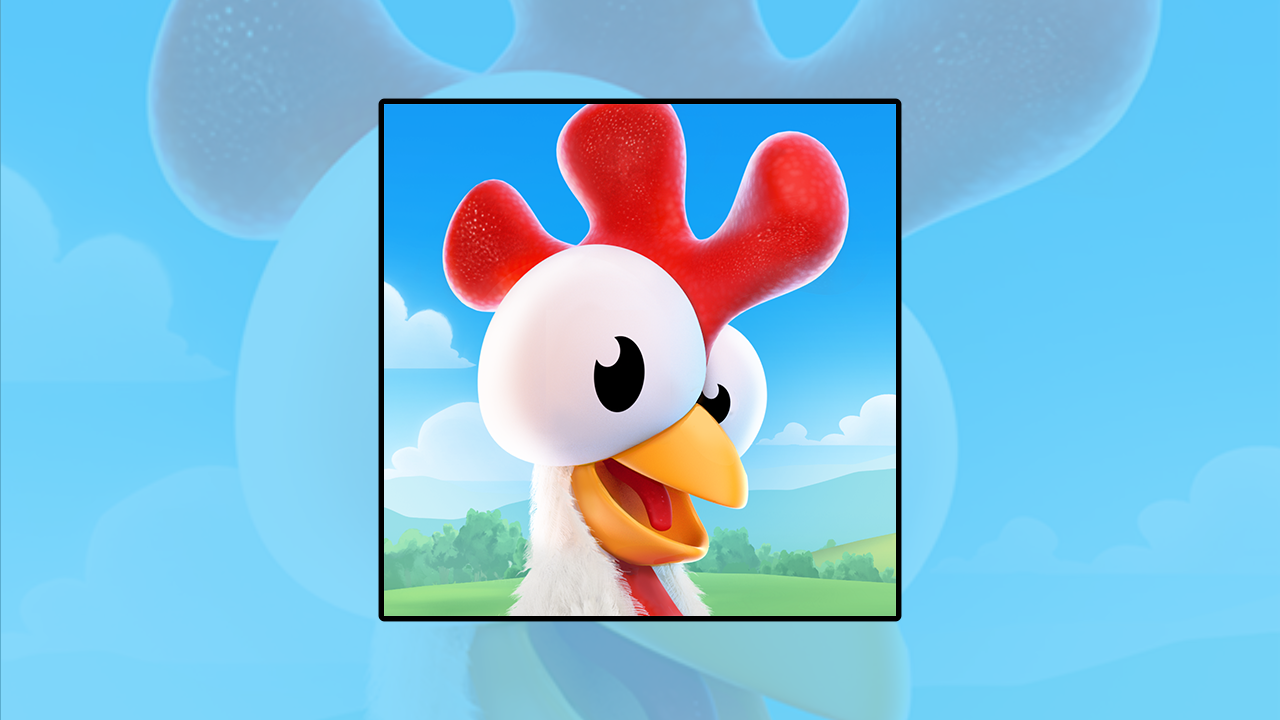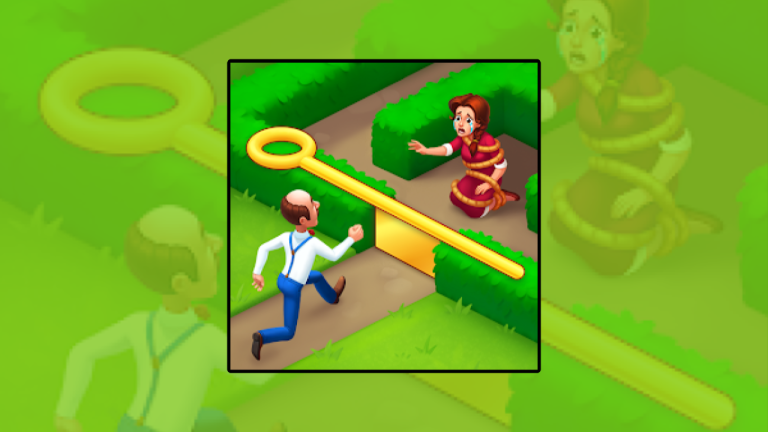10 Best Hay Day Tips and Tricks: How We Keep Our Farm Thriving!
Hey there fellow farmers! If you’re like us, you’ve found yourself enchanted by the delightful world of Hay Day, where the sun always shines, the crops never fail, and the animals are bursting with personality. Whether you’re a seasoned player or just downloaded the game yesterday, there’s always something new to learn and discover in this vibrant, virtual farming community.
We’ve been tilling our virtual soil, feeding our pixelated chickens, and trading goods with our neighbors for quite some time now. Through trial and error, we’ve picked up a handful of handy tips and tricks along the way. These nuggets of wisdom have helped us maximize our profits, speed up our progress, and most importantly, enjoy the game to its fullest.
So, whether you’re playing on Android or iOS, pull up a hay bale and settle in. We’re excited to share the strategies that keep our farm thriving and our spirits high. Let’s dive right in and explore together how to make the most out of your Hay Day experience!
1. Start with the Basics
Before we get ahead of ourselves dreaming about a sprawling farm filled with every type of crop and animal, we need to master the basics. The foundation of a successful farm in Hay Day is efficient crop management. We’ve learned that it’s crucial to keep those crops growing and harvested promptly.
First things first, always have something growing in the fields. Whether it’s wheat, corn, or carrots, a barren field is a missed opportunity for generating resources and income. We like to plant crops that grow quickly when we know we’ll be able to check back in a short while. This way, we keep the goods flowing and the experience points (XP) accumulating.
But don’t just plant crops haphazardly. We’ve found it helpful to have a plan. Think about what crops you’ll need in the near future for orders, animal feed, or goods production. Having a variety of crops in your silo means you’re ready for anything, and you won’t have to halt production because you’re missing ingredients.
Also, don’t let your crops wither away from neglect. We’ve been there, and it’s a sad sight! Harvest your crops as soon as they’re ready, and replant immediately. This cycle of planting and harvesting keeps our farm productive and our stockpile of goods growing.
Lastly, be wise with your crop selection. Some crops are more profitable than others when sold directly, but the real goldmine is using those crops to produce goods that bring in even more coins. So, understand the demand, know the market, and plant accordingly.
By starting with these basic crop management principles, we’ve built a strong foundation for our farm. Once you have these down, you’re well on your way to becoming a Hay Day expert like us!
2. Don’t Forget the Animals
Our animals are not just adorable; they are the lifeblood of our farm, providing us with essential items that keep our operations running smoothly. Taking care of our animals is a top priority, and over time, we’ve developed a routine that ensures they are always fed, happy, and productive.
Firstly, let’s talk about feeding. Each animal requires a specific type of feed, which you can produce in the Feed Mill using your crops. We’ve learned to always keep a stock of each type of feed in our silo. It’s easy to get caught up in planting and harvesting crops, but without feed, our animals won’t produce the goods we need.
We also make it a point to regularly collect the items our animals produce. Milk from cows, eggs from chickens, bacon from pigs—you get the idea. These items are not only valuable, but they are also ingredients for other products we can make and sell. Regular collection ensures that our animals continue producing without interruption.
Space for animals is also something to consider. Each animal needs a specific habitat, like a coop for chickens or a pen for pigs. We’ve found it beneficial to gradually increase the number of habitats as we expand our farm, allowing for a diverse and abundant production of animal goods.
And let’s not forget about the pets! Though not mandatory, having pets like cats and dogs brings additional joy to our farming experience. They might need some attention and treats, but in return, they’ll keep our spirits lifted with their playful antics.
Lastly, patience is key. Animals take time to produce goods, and rushing the process won’t help. Instead, we use this time to focus on other aspects of our farm, like tending to crops or fulfilling orders. Before we know it, our animals are ready for collection again.
By giving our animals the care and attention they deserve, we ensure a steady supply of valuable goods that fuel our farm’s success. Remember, a happy animal is a productive animal, and taking care of them is an investment that pays off in the long run!
3. Keep an Eye on the Boat
The boat that docks at your pier isn’t just a decorative element in the game; it’s a vessel of opportunity, bringing in orders from distant lands that are eager for your farm’s produce. Engaging with these boat orders can be a fantastic way to earn coins and experience, but it requires a bit of strategy and planning on our part.
First off, it’s essential to note that boat orders are different from truck orders. While truck orders request goods for the local townsfolk, boat orders are larger and usually demand a higher quantity of items. We’ve noticed that fulfilling these can be more challenging but also more rewarding.
When a boat docks, we always take a moment to review the orders it brings. Each crate on the boat represents a different order, and it’s up to us to decide which ones are worth pursuing. We consider the items requested, the quantity needed, and the rewards offered. Sometimes, it’s beneficial to complete all orders, while other times, we might choose to focus on just a few.
Preparation is key. Since boat orders often require a significant number of goods, we’ve found it helpful to prepare in advance. Keeping a diverse and abundant stock of items in our barn allows us to quickly fill orders when the boat arrives. If we’re short on something, we start producing it immediately or check the Daily Dirt for potential purchases from other players.
If an order seems too daunting or not worth the effort, there’s no harm in sending the boat away empty-handed. Another one will arrive soon with new orders, and it might have a better offer. We’ve learned not to stress over every boat; instead, we pick and choose the orders that align with our resources and goals.
Lastly, don’t forget about the help of your neighborhood! If you’re part of an active and supportive neighborhood, you can request help with boat orders. Your neighbors can donate items to help you complete orders, and you can do the same for them. It’s a community effort, and together, we make sure that no boat leaves the dock without a full cargo.
By paying attention to the boat and strategically choosing which orders to fill, we’ve turned this feature into a reliable source of income and progress for our farm. With a bit of planning and teamwork, the boat can be a boon to your Hay Day experience!
4. Trade, Trade, Trade
Engaging in the bustling market of Hay Day has been a game-changer for us. Trading isn’t just about getting rid of excess stock; it’s a dynamic strategy that helps us acquire essential items, complete challenging orders, and foster a sense of community with fellow players.
Firstly, let’s talk about the Roadside Shop. This little stall is where we can sell goods to other players. We’ve found it’s crucial to set reasonable prices. While it might be tempting to mark up prices for profit, we’ve noticed that items priced fairly tend to sell quicker, keeping the coins flowing in steadily.
We also pay attention to what’s in demand. Certain goods are highly sought after in the Hay Day community due to their rarity or the difficulty in producing them. By keeping an eye on the market and identifying these hot items, we can strategically sell goods that are likely to be snapped up quickly by other players.
But trading isn’t just about selling; it’s also about buying. The Daily Dirt newspaper is our go-to source for checking out what other farmers are selling. We scour it regularly for bargains and necessary items that can help us fulfill orders or stock up our barn. Being vigilant and acting fast is key, as good deals tend to disappear quickly!
Joining an active neighborhood has been invaluable for our trading endeavors. In a neighborhood, we can trade items with fellow members, helping each other out in times of need. If we’re short on a particular item, we can request it from our neighbors, and vice versa. This collaborative approach not only strengthens our in-game relationships but also creates a supportive trading network that benefits all members.
Lastly, we practice balance. While trading is fantastic, we ensure not to sell everything. Maintaining a diverse and sufficient stock of items in our barn is crucial for our farm’s operations. We trade smartly, keeping in mind our current needs and future requirements.
Through thoughtful and strategic trading, we’ve managed to thrive in Hay Day’s vibrant market. By buying low, selling smart, and collaborating with neighbors, trading can become a powerful tool in your farming arsenal, helping you grow and succeed in the game.
5. Expand Slowly
Expansion is exciting; it’s a sign of progress and growth. However, we’ve learned the hard way that rapid expansion without proper planning can lead to a cluttered, unmanageable farm that’s more stressful than fun. Here’s how we approach expansion with caution and strategy.
First and foremost, we focus on our storage buildings: the Silo and the Barn. These structures hold our crops and goods, respectively, and they quickly fill up as we progress in the game. Before even thinking about buying new land, we make sure our storage is up to snuff. Expanding the Silo and Barn ensures we have enough space to store the increasing variety and quantity of goods we produce and collect.
Next, we consider our production capacity. Expanding the farm isn’t just about having more space; it’s also about being able to efficiently produce and process more goods. We invest in upgrading our production buildings, like the Bakery and Dairy, to increase their capacity and reduce the time it takes to make items. This way, when we do expand, we’re ready to handle the influx of new crops and orders efficiently.
When it comes to actually buying new land, we’re selective. Each plot of land requires a specific set of expansion materials, like mallets, marker stakes, and deeds. These materials can be hard to come by, so we use them wisely. We prioritize plots that give us access to new features or resources, like the mine or fishing area.
We also take the time to organize our farm thoughtfully. A well-laid-out farm not only looks nice but is also easier to manage. We place similar buildings and decorations together, creating distinct areas for crops, animals, and production. This organization helps us quickly locate and access different parts of our farm, making our daily tasks smoother and more enjoyable.
Lastly, we remind ourselves that Hay Day is not a race. It’s tempting to expand as quickly as possible, but we’ve found that slow and steady truly wins the race in this game. Taking the time to plan, organize, and prepare for each expansion results in a farm that’s not only productive but also a joy to manage and behold.
By approaching expansion with a careful and strategic mindset, we’ve built a farm that’s efficient, organized, and ready for whatever challenges and opportunities come our way. Happy expanding and farming!
6. The Daily Dirt
The Daily Dirt is our daily newspaper in Hay Day, and it’s an absolute treasure trove if you know how to use it right. It’s not just about selling your goods; it’s also a fantastic resource for snagging great deals and discovering what’s trending in the market. Here’s how we make the most out of every issue.
Firstly, we make it a habit to check The Daily Dirt regularly. New issues come out frequently, and each one contains a fresh set of advertisements from other players selling their goods. We’ve found that staying updated with the latest issues allows us to quickly jump on attractive deals.
Timing is crucial when it comes to The Daily Dirt. Some items are in high demand, and players snatch them up quickly once they appear in the newspaper. We’ve learned to act fast when we spot a good deal, as hesitation often leads to missed opportunities.
But it’s not just about buying; it’s also a platform for selling. When we have excess stock, especially of rare or highly sought-after items, we advertise them in The Daily Dirt. Setting a fair price is key here. While it might be tempting to set high prices for rare items, we’ve noticed that reasonably priced goods tend to sell faster, bringing in steady profits.
We also use The Daily Dirt to understand the market dynamics. By observing which items are commonly sold and which ones are rare, we get a sense of the market demand. This insight helps us plan our production and selling strategies more effectively, ensuring we focus on goods that are likely to bring in the most profit.
Another trick we’ve learned is to use the newspaper to visit other farms. This isn’t just to buy items; it’s also a great way to get inspiration for our farm layout and design. Seeing how other players organize and decorate their farms sparks ideas for our own space, helping us create a farm that’s not only efficient but also aesthetically pleasing.
Lastly, don’t forget to refresh! If the current issue doesn’t have what we need, we don’t fret. Refreshing brings up new advertisements, and the perfect deal might just be a click away.
By actively engaging with The Daily Dirt, we’ve turned this simple newspaper into a powerful tool for success in Hay Day. With quick reflexes and a keen eye for deals, you too can master the art of the trade with The Daily Dirt.
7. Save Those Diamonds
Diamonds are the premium currency in Hay Day, and while it’s tempting to spend them left and right, we’ve learned that a little restraint goes a long way. These shiny gems are scarce, so using them wisely is crucial for sustained success in the game.
First off, we don’t use diamonds to speed up processes impulsively. It might seem convenient to hasten the production or growing time when we’re impatient, but we’ve found that saving diamonds for more strategic uses pays off in the long run. Time always moves forward, but diamonds, once spent, are gone unless you buy more.
Instead, we often use diamonds to purchase special items or equipment that can’t be bought with coins. Some of these exclusive items significantly enhance our farm’s productivity or aesthetic appeal, making them valuable investments for the future of our farm.
We also consider saving diamonds for expanding our production queues. Many production buildings allow you to queue up multiple items to be produced, one after the other. By default, these queues are quite short, but they can be expanded using diamonds. A longer queue means we can set more items to be produced, allowing our farm to continue working even when we’re not actively playing.
Another wise use of diamonds is to invest in rare and valuable decorations that can boost the experience points (XP) we earn. While decorations might seem purely cosmetic, some offer XP multipliers that can help us level up faster, unlocking more features and capabilities in the game.
We also keep an eye out for special offers and deals that pop up occasionally in the game. Sometimes, these offers allow us to purchase diamonds at a discount or acquire items that are usually hard to get. By taking advantage of these deals, we can maximize the value we get from spending our precious diamonds.
Lastly, we remember that diamonds can be earned through gameplay, not just purchased with real money. Completing achievements, leveling up, and finding diamonds while harvesting crops are just a few ways we can earn diamonds for free. Being aware of these opportunities and actively pursuing them helps us build a stash of diamonds without breaking the bank.
By being judicious and strategic with our diamond spending, we ensure that we have enough of this precious resource for when we truly need it. With careful planning and a bit of restraint, diamonds can be a farmer’s best friend in Hay Day.
8. Fishing is Fun
Once the fishing area is unlocked, a whole new aspect of Hay Day opens up, and we’ve found it to be not only enjoyable but also quite rewarding. Fishing allows us to catch various types of fish, which can be used in different recipes or sold for a nice profit. Here’s how we make the most out of our fishing expeditions.
Firstly, we ensure we have a good stock of lures. Lures are essential for catching fish, and different lures attract different types of fish. We always keep a variety of lures on hand to maximize our chances of catching a diverse range of fish. Crafting lures in the Lure Workbench is straightforward, and having a steady supply ready makes our fishing trips more productive.
Patience is key when it comes to fishing. Once the lure is in the water, it might take a little while for a fish to bite. We’ve learned not to rush the process; instead, we enjoy the serene, picturesque environment while waiting for a catch. When a fish does bite, a circle appears around it, and we wait for the right moment to tap and reel it in.
We also pay attention to the shadows in the water. Different shadows represent different types of fish. With experience, we’ve learned to identify which shadows correspond to which fish, helping us target specific types if needed for orders or recipes.
The Fishing Book is a handy tool we often refer to. It keeps track of all the different fish types we’ve caught, and it’s a fun challenge to try and catch them all. Each fish type also has different weight classes, and catching bigger fish offers greater rewards.
Speaking of rewards, fishing provides various benefits. Not only do we get the fish themselves, which are valuable, but we also earn experience points and occasionally find diamonds. The fish we catch can be used in the Sushi Bar, or we can sell them directly for coins.
Lastly, participating in the Fishing Derby can be a fantastic way to earn additional rewards. During these events, we complete fishing tasks to earn points for our neighborhood, competing against others for valuable prizes.
By approaching fishing with patience and strategy, we’ve found it to be a relaxing and rewarding addition to our Hay Day experience. With a variety of fish to catch and benefits to gain, fishing offers a delightful diversion from the hustle and bustle of farm life. Happy fishing!
9. Stay Active
Consistency is key in Hay Day. The more we engage with the game, the more rewards and benefits we reap. Staying active doesn’t necessarily mean playing for hours on end (although we’ve all been there!), but rather logging in regularly and tending to your farm’s needs. Here’s how we make the most of our time in the game.
Firstly, we never underestimate the power of daily logins. Hay Day often provides rewards simply for opening the game each day. These daily rewards can include valuable items like diamonds, expansion materials, or other resources that are crucial for our farm’s growth and development. It’s a small commitment for consistent gains.
We also prioritize completing the daily chores and tasks presented in the game. These tasks are usually straightforward, like harvesting a certain number of crops or producing specific goods. Completing these not only provides immediate rewards but also contributes to our overall progress and keeps our farm running smoothly.
Engaging with events and limited-time offers is another way we stay active and reap benefits. Hay Day frequently hosts special events that offer unique rewards and challenges. Participating in these events can be a fun way to break the routine while earning exclusive items or additional resources.
Being part of a neighborhood is a significant aspect of staying active for us. In a neighborhood, we can engage with other players, participate in derbies, and help each other out with trades and requests. This sense of community not only makes the game more enjoyable but also provides a support network that helps us tackle challenges and achieve our goals more efficiently.
We also pay attention to our farm’s cycles. Understanding the production and growth times of our crops, animals, and goods helps us plan our sessions effectively. We can set longer processes to run when we know we’ll be away and focus on quicker tasks while actively playing. This way, our farm is always productive, whether we’re online or not.
Lastly, we take breaks when needed. While staying active is important, it’s also crucial not to burn out. We play in a way that’s enjoyable and sustainable, taking breaks when necessary and returning to our farm with renewed energy and enthusiasm.
By logging in regularly, participating in events, and engaging with the community, we keep our farm thriving and enjoy the rich, rewarding experience Hay Day has to offer.
10. Have Fun!
At the end of the day, Hay Day is a game, and games are meant to be enjoyed. While it’s easy to get caught up in the pursuit of coins, diamonds, and expansion, we always remind ourselves to take a step back and appreciate the joy and relaxation that the game brings. Here’s how we keep the fun alive in our farming adventure.
First and foremost, we set realistic goals for ourselves. While it’s thrilling to expand and grow, setting targets that are too ambitious can lead to frustration and burnout. We celebrate small victories, whether it’s completing a challenging order, catching a rare fish, or simply designing a part of our farm that we love.
We also embrace creativity and personal expression in our farms. Hay Day offers a plethora of decorations and layout options, allowing us to create a space that reflects our personality and style. Experimenting with different designs and themes brings a unique sense of joy and satisfaction, making the game feel truly ours.
Engaging with the Hay Day community is another source of fun for us. Whether it’s through joining a neighborhood, participating in forums, or following Hay Day on social media, connecting with fellow players adds a social dimension to the game that we find enjoyable and rewarding. Sharing experiences, tips, and laughs with others enhances the overall gaming experience.
We also take on the various challenges and events that Hay Day offers with a positive and adventurous spirit. These limited-time activities provide fresh and exciting ways to engage with the game, offering new rewards and experiences that keep the gameplay dynamic and interesting.
Importantly, we don’t let setbacks get us down. Every farmer faces challenges, whether it’s a shortage of resources, missed opportunities, or mistakes in planning and strategy. Instead of dwelling on these, we learn from them and move forward with renewed determination and optimism.
Lastly, we remember to take breaks and enjoy the game at a pace that suits us. Whether you’re a casual player who logs in occasionally or a dedicated farmer who tends to your crops and animals daily, playing in a way that aligns with your lifestyle and enjoyment is key.
By keeping these principles in mind, we’ve maintained our love for Hay Day over time, finding joy in the simple pleasures of virtual farming and the vibrant, supportive community that comes with it. So, dive in, have fun, and happy farming!
Conclusion
And there you have it, fellow farmers! We’ve shared the tips and tricks that have kept our farm thriving and our spirits high in the delightful world of Hay Day. Remember, every farm and farmer is unique, so feel free to adapt these strategies to fit your style and goals. The most important thing is to enjoy the journey, celebrate your victories (no matter how small), and have a blast growing your virtual paradise.
For more insights and strategies, don’t hesitate to explore other helpful resources. Check out iMore’s Top 6 Tips, Tricks, and Cheats to save cash and grow your farm fast. If you’re keen on leveling up and collecting coins efficiently, Player.One’s Strategy Guide is a must-read. And for a set of straightforward, easy-to-follow tips, LevelSkip’s 9 Simple Tips and Tricks for Hay Day is a fantastic place to start.
Remember, the Hay Day community is vast and supportive, so don’t be shy to connect with fellow players, share your experiences, and learn from each other. Happy farming, and may your crops be ever bountiful and your animals forever happy!






